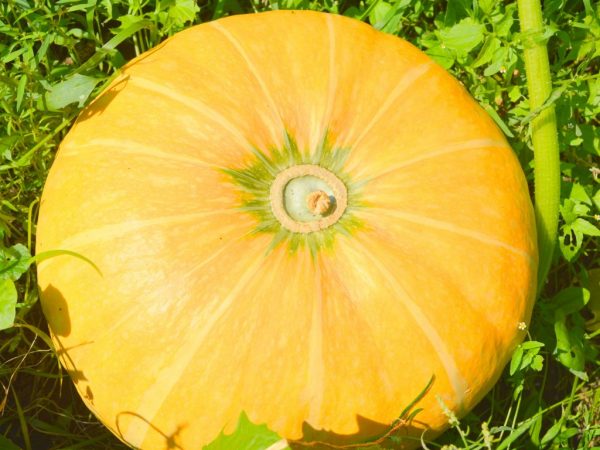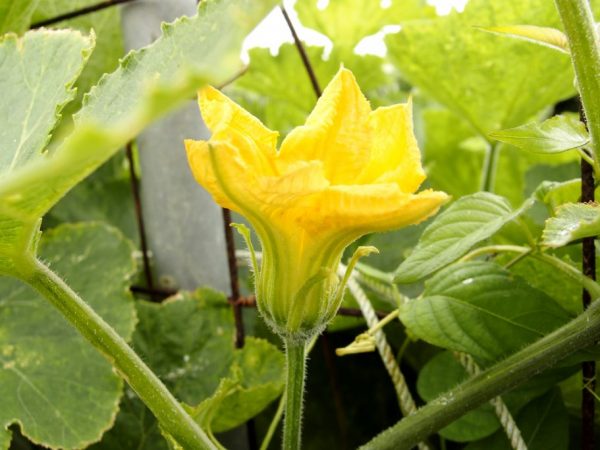Interesting Melon Pumpkin Facts
Melon pumpkin is one of the best large-fruited varieties. It is not picky to care for, it is perfectly preserved and has an excellent taste.

Interesting Melon Pumpkin Facts
Variety information
Melon is considered a mid-season variety. The plant is creeping, long-leaved, the stem is round, cylindrical in shape. The stem is without grooves and the leaves are pentagonal.
The first fruits begin to ripen within 100-110 days after germination and continue until the first frost.
Fruits are round and large (25-30 kg), slightly ribbed, slightly flattened.
The culture is unpretentious, it tolerates cold and drought equally well. The bushes survive a cold snap down to -2 ° C.
The fruits are very sweet. Sugar content sometimes reaches 15%, this is even more than in watermelon. Their peculiarity is the melon aftertaste.
Several factors affect the amount of sugar:
- soil composition;
- the number of hot sunny days;
- frequency and abundance of watering;
- the frequency of fertilizing with fertilizers.
The pulp takes a long time to boil, it is juicy and aromatic, it is used in the preparation of baby food and juices. The peel is orange, the seeds are white.
Growing features
Pumpkin is considered an unpretentious crop, but there are still certain points to consider in order to get a good harvest.
- Before planting, you can soak the seeds in water for 1-2 days so that they germinate faster. A special solution of potassium permanganate or liquid complex fertilizer is also suitable. After that, cover with a damp cloth and make sure that it does not dry out.
- It is important to fertilize the soil well. In advance, in the fall, you can lay compost in the ground in the place where it is planned to plant a pumpkin in the spring or put warm beds. The more organic matter, the more abundant the harvest. During the period of growth and development, it is necessary to periodically feed the plants with humus, mineral fertilizers, and wood ash.
- Plant seeds in warm soil. Approximate dates are mid to late May. Although this type of pumpkin is cold-hardy, the seeds will not be able to germinate in the frozen cold ground.
- It will be nice if onions, legumes or tomatoes were growing in the chosen place before, and you can plant beans, potatoes or cucumbers nearby.
- All pumpkin plants are very fond of sunlight, so it would be the right decision to plant it in well-lit areas where there are no strong gusts of wind. An ideal place near the fence or the southern wall of the house.
- Waterlogging of the soil is not encouraged, so it is important to choose a place where there is no stagnation of rainwater.
Landing scheme

When grown on trellises, the plant gets a lot of light.
Vertical trellises are a great way to grow pumpkins. It should be placed on the south side of the house or fence, for better illumination of the plants.
The holes are dug at a distance of 50 cm and 2-3 seeds are placed or a sprout is planted if planting is done by seedlings. A stake is placed near each hole and a cord is tied to it, the other end of which is pulled to the roof of the house or to the top of the fence. The main stem runs along the cord.
2 ovaries should be left on each of the plants, pinching the growth points.The lateral shoots that do not have fruits are completely cut out, and the lower ones are pruned.
The description of this method shows that with such a cultivation, many advantages can be distinguished:
- good illumination;
- small area occupied by plants;
- plants give shade to the wall of the house, which in hot summer helps to keep cool;
- Due to the increased shadow area created by the large pumpkin leaves, moisture evaporates more slowly.
Gardeners reviews
The description indicates: the technique of growing Melon gourd is quite simple, it easily tolerates drought and short-term frosts down to -2 ° C. It is bypassed by many diseases that other varieties are susceptible to.
It must be remembered that the pumpkin loves sunny areas without drafts, a lot of fertilizers and abundant watering. Considering these factors, you will be able to grow your harvest to glory.

